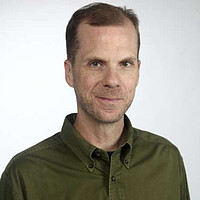Fighting ‘bad’ fire with good: Australia revisits an Aboriginal tradition
Loading...
| Nowra, Australia
When Noel Webster met up with firefighters, they were surprised at his outfit.
Mr. Webster, a cultural fire practitioner who belongs to the Yuin Aboriginal group, was going to demonstrate the techniques indigenous communities here have used for thousands of years: how to set low-intensity burns that help prevent larger bushfires, while preserving habitat for wildlife. But instead of heavy safety gear, cultural practitioners will wear T-shirts and shorts, and walk barefoot – to better gauge the heat of the flames and direction of the wind.
Why We Wrote This
The idea of fire seems almost synonymous with danger and damage. But it can be regenerative and protective, too – a lesson Aboriginal fire experts are hoping could shift Australia’s approach to preventing bushfires.
Indigenous fire practitioners “read the land, not spreadsheets,” Mr. Webster says. “The data is right here.”
Australian fire crews do carry out preventive burns, but often decimate native plants, accelerating the growth of invasive species more vulnerable to bushfires. Now, as the country battles its worst bushfire season on record, which has burned more than 27 million acres, the magnitude has brought renewed attention to the practice of cultural burning. Paired with prescribed burns, they could help forests mend and ease the effect of climate change, fire experts say.
“It’s a move toward understanding that we live within nature, that we have reciprocal responsibilities with nature,” says researcher Jessica Weir. “We need this as a societal shift.”
Noel Webster pointed at a sinuous line where the forest floor turned from black to green, from dead to alive. Barren eucalyptus trees the color of coal stood to the north, scorched by a bushfire last month. To the south, beyond the line where the flames had stopped, tree leaves and tufts of grass shone green in the morning light.
The expanse of healthy land survived with the aid of a different kind of fire set 18 months earlier by Mr. Webster. A member of the Yuin Aboriginal group and a cultural fire practitioner, he had overseen a “cool burn” on this tract of private bushland outside Nowra, a tourist town in Australia’s South Coast region.
Mr. Webster and a team of fellow indigenous fire practitioners lit low-intensity fires in small sections of forest each day for two weeks. They thinned the dead grass, leaves, and branches that elsewhere fed the recent bushfire, while sparing patches of grass and brush, most saplings, and adult trees that provide the forest’s canopy – enough habitat to sustain wildlife.
Why We Wrote This
The idea of fire seems almost synonymous with danger and damage. But it can be regenerative and protective, too – a lesson Aboriginal fire experts are hoping could shift Australia’s approach to preventing bushfires.
The black-green divide told him the blaze had died out for lack of surface fuel in the area they treated, a minor victory in a bushfire season that has claimed 33 lives, destroyed some 3,000 homes, and burned more than 27 million acres.
“We talk about fighting fire. But to heal country, we need to be working with fire,” Mr. Webster says. His reference to “country” invokes the Aboriginal idea of land as a physical and spiritual space to which human beings belong. “People only know about ‘bad’ fire that destroys homes. We want them to know about good fire.”
The magnitude of this summer’s bushfires has exposed the inadequacy of Australia’s efforts to clear forest overgrowth, including its reliance on high-intensity, large-scale prescribed burns carried out by public agencies.
The toll of the infernos since September has brought renewed attention to the indigenous practice of cultural burning. Advocates suggest that Aboriginal fire methods, paired with prescribed burns, could help forests mend and ease the effect of climate change in a country that recorded its hottest and driest year in 2019.
“It’s unfortunate that it takes devastation on this scale to open people’s eyes,” says Oliver Costello, co-founder of Firesticks Alliance, an indigenous fire network based in New South Wales. “But we’re hopeful some good can come from it.”
“Read the land”
The advent of Western colonialism in Australia in the late 1700s began pushing Aboriginal people and their cultural traditions to the country’s fringes. The ancient method among indigenous groups of working with fire to cleanse and revitalize the land bewildered European settlers, who perceived wildfire only as a destructive force.
Little has changed two centuries later. Aboriginal fire programs receive scarce public funding, and cultural burns remain small in scope and restricted by law to private land.
Linda Carlson, who runs the Aboriginal land council in Mogo, a coastal town of 300 residents south of Nowra, links the bushfire cataclysm to the country abandoning indigenous fire practices.
“This could have been prevented,” she says. A fire that ripped through the community on New Year’s Eve incinerated the council’s office and the homes of Ms. Carlson and four colleagues. “Cultural burns could have helped restore balance to our land and kept these fires from raging out of control.”
Australia’s long-held policy of fire suppression – attempting to extinguish bushfires as soon as they start – has resulted in forests choked with trees and underbrush that state and federal agencies seek to thin with controlled burns. Last fire season, bushland crews in New South Wales burned 395,000 acres, or less than 3% of the total area torched by bushfires across the state this summer.
Most prescribed fires leave behind sparse habitat for wildlife. The high heat can decimate native plants and grasses and, in turn, accelerate the growth of invasive species more vulnerable to bushfires.
Cultural burning involves a slower, gentler process. The selective burning by fire practitioners nurtures a habitat mosaic that protects flora and fauna, allows soil to retain moisture, and forms gaps in the terrain that act as firebreaks.
Mr. Webster, an Aboriginal community support officer in the South Coast region, quit his previous job as a national parks ranger in protest against its controlled burn program. He explains that indigenous practitioners “read the land, not spreadsheets.”
“The public officials say they’re working off data. But the data is right here,” he says, holding his palms up toward the canopy. “You have to feel country.”
In the view of Jessica Weir, a senior research fellow at Western Sydney University who has studied Aboriginal fire practices, cultural burns at once heal forests and represent a vital reconnection with country. “It’s a move toward understanding that we live within nature, that we have reciprocal responsibilities with nature,” she says. “We need this as a societal shift, including public-sector funding for land management.”
In Canada and the United States, the onset of “megafires” intensified by climate change and forest mismanagement has revived interest in Native American burning practices. In New South Wales, Firesticks Alliance, one of Australia’s few indigenous fire programs, hosts workshops to teach cultural burning to landowners, farmers, and community officials.
Mr. Webster has conducted a couple of demonstration burns for local fire crews. He recalls their initial surprise at his disregard for safety gear – cultural practitioners will wear T-shirts and shorts and walk barefoot to better gauge the heat of the flames and direction of the wind. But their skepticism evolved into appreciation as they observed the burn, and he sensed the possibility for future collaboration.
“We don’t only want to help our community but the wider community,” he says. “We want to share the journey together.”
“Start the healing”
Leanne Brook’s property resembles an emerald mirage within the charred landscape west of the town of Ulladulla. A massive bushfire ravaged this area between Nowra and Mogo in early December and returned four more times over the next five weeks, devouring hundreds of thousands of acres and the properties of nearby residents.
Last June, after meeting Mr. Webster at a Firesticks Alliance workshop, Ms. Brook and her husband asked him to perform a burn on their 7-acre lot. At the time, the couple saw the decision as a way to deepen their indigenous roots. In retrospect, they credit him with saving their home, and they regard cultural burning as a potential remedy to the country’s bushfire crisis.
“Prescribed burning isn’t working,” says Ms. Brook, a project manager with Ulladulla’s Aboriginal land council. “What’s the other option? The one that worked for thousands of years.”
Indigenous practitioners resist that either-or framing, in part because cultural burns require more time and tend to cover less ground than prescribed burns. Fire researchers suggest that interlacing the two approaches offers the most pragmatic strategy for taming bushfires.
New South Wales spends about $100 million (Australian; U.S.$67 million) on prescribed burning. An expected increase in public funding for hazard reduction efforts – a response to a bushfire season that scientists describe as the worst on record – could give a boost to cultural burning that advocates call long overdue.
As acrid smoke coats the skies above Canberra, the nation’s capital, lawmakers are weighing funding proposals to mitigate bushfire disasters, including indigenous fire programs. Ms. Weir asserts that the evidence in support of expanding cultural burning lies in the vast destruction across the country.
“These fires have been so extraordinary in their scale – and so many people have been affected – that I hope it can bring about a commitment for long-term change,” she says.
Mr. Costello has requested $100 million in public funding for a four-year program to train and support 100 cultural fire practitioners and assist with bushfire recovery in indigenous areas. He hopes policymakers will consider that investment in the context of the billions spent on firefighting, insurance claims, and rebuilding communities.
“I think we have to ask whether Australia can afford to keep doing what we’ve been doing,” he says. “The land is sick. We have to start the healing now.”









